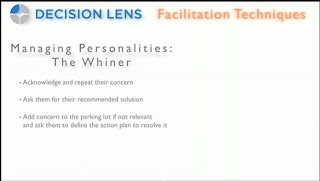A Project Meeting is a regular event that
involves stakeholders and key functions to generate group decisions and take actions that contribute to quicker
project delivery, according to the planned goals and expected results. Normally,
it will be a series of meeting sections and sustain for a period, instead of one-time meeting.
There are three key stages in project
meeting: a) Kick-off meeting; b) Follow-up meeting; c) Announcement of final
outcome. Personally, I think kick-off meeting is the most important stage which
is the first meeting of the project where you give all the team members good
news that project is ‘go ahead’ from the sponsors and also set the tone of your
project – is it going to be a success or a failure.
Kick-off meeting
Primary kick-off meeting should make
preparation similarly with normal meeting including a) setting goal; b) project
team member and responsibility; c) project assumption; d) initial project plan;
e) key milestones; f) meeting schedule; g) meeting material(deck). The meeting
leaders need to achieve below goals during kick-off meeting:
·
Energize project team
·
Communicate goals and
expectations
·
Introduce team members and
stake-holders
·
Highlight importance of project
for organization
·
Provide information of
processes, communication plan, project plan, key milestones
·
Handout team members’ contact information
including their function name
·
Present regular meeting schedule
·
Give time to attendees to ask
questions and express views
Follow-up meeting
Project will persist for a period and need
to schedule regular follow-up meeting to trace the whole progress of project
including the status of plan, outcome
and key milestones by stage, feedback and challenge. During follow-up meeting,
leaders should focus on those due pending action items, investigate the key
issues, work out the solution with specific small group, and decide escalation
items. At the same time, meeting leaders also need to reschedule separate
meeting within small groups for specific goal and avoid wasting whole project
team's time. At the end of follow-up meeting, meeting leader should summarize
all outcomes, pending items, related action owners with deadline, and next
meeting time.
Announcement of final outcome
Once the project launches successfully, meeting
leader will hold a final meeting named " Announcement of xxx
Project". In this last meeting, meeting leader will announce the result of
project and express appreciation on behalf of company. Furthermore, high level managers
will be invited to present medals for those key contributors. But if the project
fails to launch due to some reasons, project leaders also need to hold this
meeting to announce the result, express personal appreciation for all team
members, and brief the cause of failure.





















